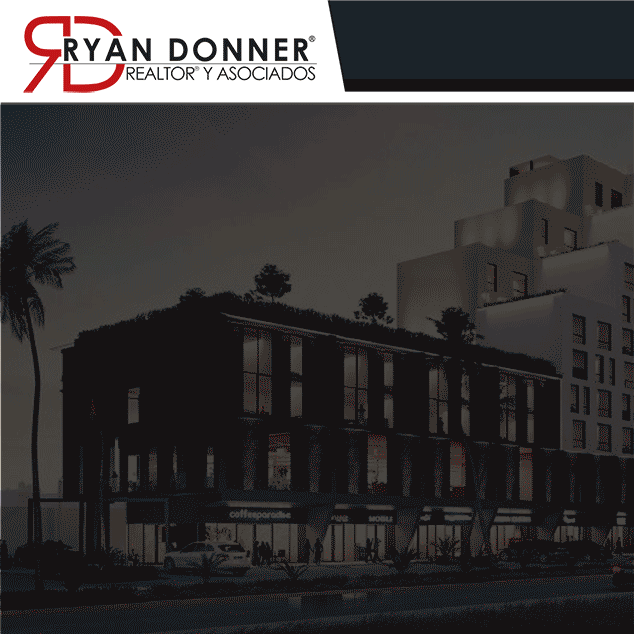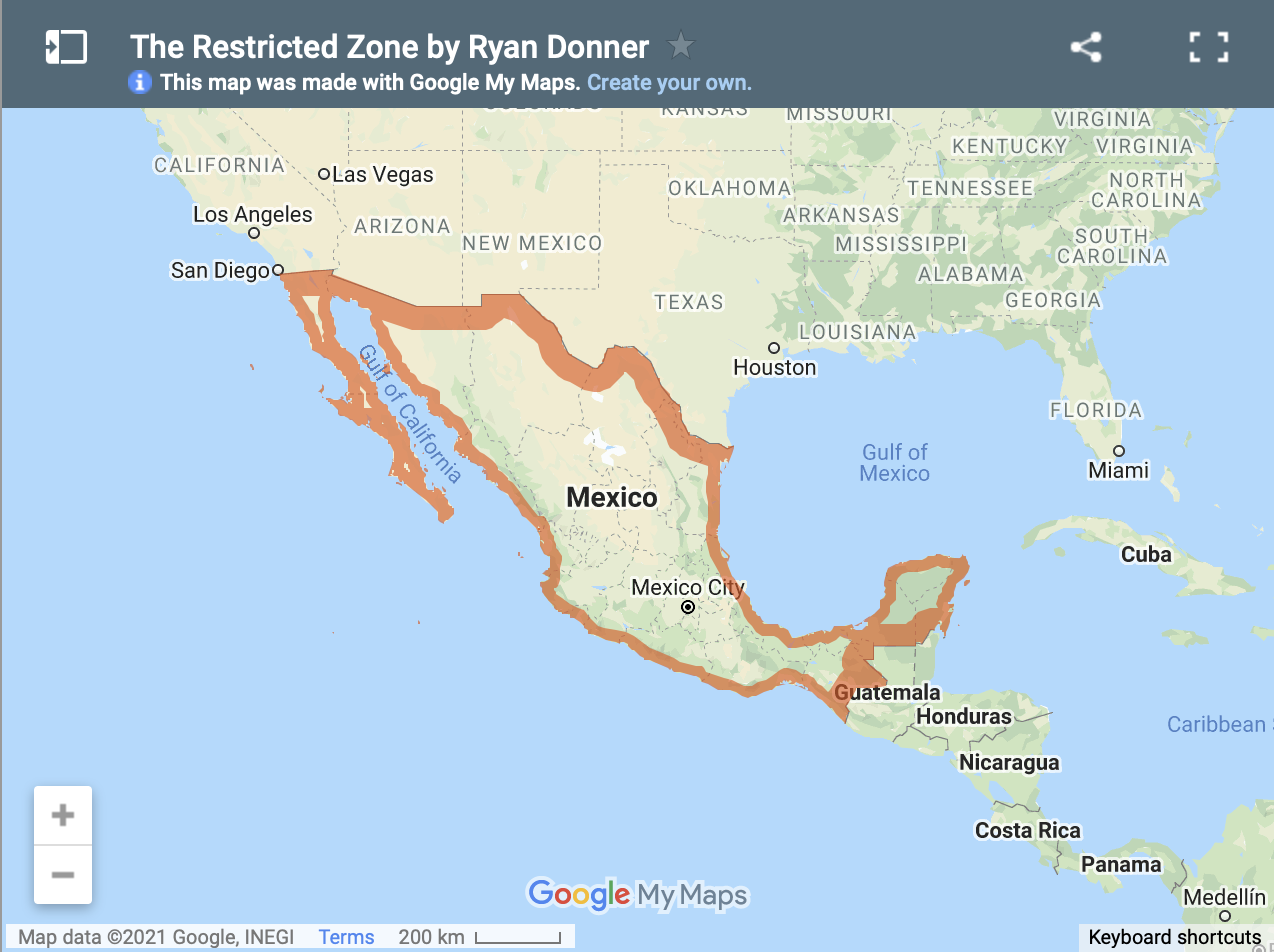Did you know what do foreign citizens need to buy a property outside the restricted zone?
A foreign citizen can purchase real estate in Mexico. Mexican authorities have established purchase mechanisms depending on where you buy.
Restricted Zone
Since 1917, Mexican Constitution designated the area within 100 kilometers (62 miles) of Mexico´s borders and within 50 kilometers (31 miles) of the coastlines as off-limits to direct real estate ownership by foreigners. Thus, this area was known as Prohibited Zone.
 In 1993, due to globalization and the formal process of Mexico, accession to the World Trade Organization (WTO), Mexico issued the Foreign Investment Law, that allows foreign citizens to purchase properties in Mexican the Prohibited Zone, knowing since then as Restricted zone, through a Mexican bank trust and an agreement with the Federal Ministry of Foreign Affairs, for renounce to owner national jurisdiction and adopt national legislation regarding the property.
In 1993, due to globalization and the formal process of Mexico, accession to the World Trade Organization (WTO), Mexico issued the Foreign Investment Law, that allows foreign citizens to purchase properties in Mexican the Prohibited Zone, knowing since then as Restricted zone, through a Mexican bank trust and an agreement with the Federal Ministry of Foreign Affairs, for renounce to owner national jurisdiction and adopt national legislation regarding the property.
Through this mechanism, foreign owners have the right to hold, occupy, use, improve, develop, rent, and sell the property. However, the bank trust holds the legal title to the real estate.
The bank holds the legal title of the property and acts as a trustee. At the same time, the beneficial interest in the trust is owned by the foreign citizen. Therefore, the bank is obligated to deal with the property matters only to benefit the trust beneficiary. This purchase mechanism through a bank trustee arrangement is similar to how a trust fund works in the United States or Canada.
The owner’s beneficial interest in the property may be passed on by will or inheritance. The property is freely enjoyed, rented, or sold for a loan as the owner beneficiary determines.
In Ryan Donner y Asociados, our experts will lead you throughout every legal process or purchase real estate in a Mexican restricted zone.
If you want to know further information regarding the restricted zone in Mexico, check our Mexico map at https://ryandonner.com/restricted-zone/
The National Institute of Geography and Statistics (INEGI) establishes the restricted and interior zones and national territory.
Interior zone
Foreigners can buy property directly in Mexico´s interior, using the exact mechanisms like the United States or Canada. The owner will have a title property and be in the procession of the deed. A Mexican by birth or naturalization can freely buy real estate anywhere in Mexico.
The agreement in which the owner resigns to his origin country of jurisdiction and adopts local legislation regarding the property is a requirement in this scenario, too, for complying with the Mexican foreign investment by law.
Deeds are public instruments registered in the Local Publix Registry of Property that is open to the public. The Public Property Registry is a government office. In Ryan Donner y Asociados, our real estate experts ensure that the Public Notary researches the deed conditions for a real estate transaction.
There are unique places in Mexico in the interior zone;. Although their location is outside the beautiful Mexica costs, there is a wide range of amazing Mexican cities for investment and live in Mexico.
Mexico City
Mexico City is a big city with all the problems of larges cities over the globe such as traffic, pollution, insecurity, etc. Therefore, this city can be compared to New York City.
Mexico City is the most important business center and the federal government headquarters.
The cost of living is relatively low than other capital cities worldwide. Rent, groceries, public transport, museums, and other entertainment events are reasonably cheap.
The weather is dry, warm on sunny days and cool evenings.
A wide range of historical monuments, museums, and art galleries like Bellas Artes Palace, Chapultepec Castle, Museum of Anthropology, National Palace in downtown is impressive and full of Mexican history and surrounded by beautiful buildings and traditional restaurants.
Traditional neighborhoods from the 1940s, Colonia Roma and Condesa, became trendy places with the original Art Deco style and are full of cafes, boutiques, fine cuisine restaurants, bars, and beautiful parks. And there is a very modern area in the north of the city for those who love modern living style.
Guadalajara
Guadalajara is the second large city in Mexico. It became a very cosmopolitan city where modern and culture are permanent elements of this fascinating city.
Guadalajara was surrounded by 10 municipalities. Due to the rapid economic and territorial development, Guadalajara and these municipalities are now known as Metropolitan Guadalajara Zone, which is about 11 million inhabitants.
Historically, this vast city has been home for foreign students from the United States and Canada in the summer to learn Spanish, and for south American countries students for college degrees, especially medicine. That contributes to this cosmopolitan and unique city atmosphere.
This modern city combines the traditional Mexican style of any typical Mexican town with the newest innovation in architecture that you can admire in a residential condominium complex, hospitals, universities, shopping malls, and restaurants.
This modern city has a wide range of culture and entertainment options to offer to its residents. In addition, there are places like downtown and other national heritage.
Guadalajara has lovely weather, warmer than Mexico City. Therefore, in the winter season, you will only need a light jacket.
It is very close to beautiful typical destinations such as Puerto Vallarta (4-5 hours), Chapala Lake (30minutes), Tlaquepaque, which is in the metropolitan area, and typical forest towns such as Tapalpa and Mazamitla, where you can spend the weekend in a wood cabin in the middle of the woods.
Chapala
Chapala is a small village surrounded by a Lake, is just 30 minutes from Guadalajara, and is one of the favorite places for Americans, Canadians, and European citizens for retirement. There are exemplary medical services and a gathered community of retired American and Canadian citizens. These town cobblestone streets are beautiful, unique Mexican typical houses surrounded ed by beautiful gardens.
There is a promenade along the lake downtown. In addition, you can enjoy art galleries and unique gastronomic experiences in Chapala restaurants and cafes.
San Miguel de Allende
This is a beautiful small colonial town about two hours north of Mexico City. Located in the mountains high- dessert Highlands has a dry temperate climate. In winter, you just need a regular winter jacket, and summer has a very fresh temperature.
San Miguel de Allende's streets have colorfully painted colonial houses, small plazas, restaurants, art galleries, cafes, and other delicatessens.
There is a prominent artist community since the 1950s, writers, painters, musicians, and artisans. The atmosphere is unique, a mix of a typical Mexican Colonial city and cultural, gastronomic, and artistic environment.
San Miguel de Allende is a trendy place for snowbirds and ex-pats, becoming a bilingual city.
There is a wide range of investment in real estate in Mexico, since Mexico's geographical proximity to the United States or Canada, low cost and high-quality living, modern medical services, rich culture, great people, marvelous landscapes, and potential profits.
If you are interested in exploring these and other Mexican magic destinations for investment, please click here to check out our properties and be led by one of our real estate professionals.


